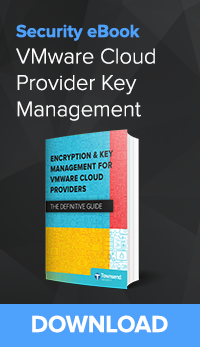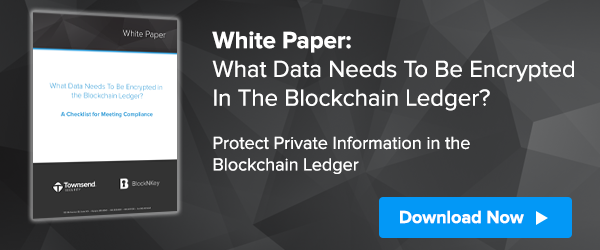The ongoing crisis in cryptocurrencies is casting a negative shadow on the underlying blockchain and similar Web3 technologies. I’ve never been a fan of cryptocurrencies and NFTs, and I don’t have any investments there. But I do have some technical experience with blockchain and similar Web3 technologies like the InterPlanetary File System (IPFS). I thought I would share some thoughts on Web3 technologies and their potential. A bit scattered, but here goes:
A nerd’s view
My background is in encryption technologies and data privacy. When I started learning
 about blockchain a few years ago I developed a sense of wonder at the technological beauty of the invention. Blockchain uses cryptography, a distributed architecture, a creative internet communications technology, an automated consensus method, and an application model (smart contracts) to create a truly different way of storing and sharing information. No really new cryptographic inventions in all of this, but blockchains are an amazing way to use cryptography in a new distributed fashion. Pretty cool stuff.
about blockchain a few years ago I developed a sense of wonder at the technological beauty of the invention. Blockchain uses cryptography, a distributed architecture, a creative internet communications technology, an automated consensus method, and an application model (smart contracts) to create a truly different way of storing and sharing information. No really new cryptographic inventions in all of this, but blockchains are an amazing way to use cryptography in a new distributed fashion. Pretty cool stuff.
Cryptocurrencies and blockchain
Bitcoin is a cryptocurrency that is built on blockchain technologies. Almost all cryptocurrencies are built on some variation of the blockchain architecture and technology. Digital currencies were one of the first uses of blockchain, but by no means the only use. I know of efforts to use blockchain technologies in the areas of real estate, supply chain management, banking, and insurance. Blockchain is great when you need solid provenance and a resilient distributed system. But, of course, money and financial instruments have a lot of emotional appeal, and so we have been inundated with news and information on cryptocurrencies. That’s unfortunate, in my opinion.
Cryptocurrency noise and distraction
A number of cryptocurrency advocates focus on the supposed benefits of eliminating centralized finance intermediaries, like banks, that control the exchange of money. The complaints often include excessive costs of these intermediaries, limitation of some level of freedom imposed by them, and a variety of other implied nefarious activities by large banks. About cryptocurrencies we often hear something like “Look, it's built on cryptography. It’s trustless and can’t be corrupted!” Or something along those lines. As we now know cryptocurrencies are not immune to corrupt operators and practices, and when you lose money you really miss those intermediaries! It turns out that intermediaries bring with them a level of governance, regulatory control, and insurance against loss. Nice to have when things go off the rails!
Web3 applications and value
Can new Web3 technologies provide any lasting value? We can admire the technology behind Web3 technologies, but at the end of the day I believe that applications built on Web3 need to prove that they can provide better value to individuals and businesses. I think new Web3 applications need to:
- Provide a great user experience. No one wants to fuss with complicated technologies, it has to be intuitive and easy to use.
- Perform well. No one wants to wait for an hour for their data and messages to get delivered.
- Work seamlessly on our PCs and our mobile devices.
- Be resilient in the face of hardware and network failures. Can we stop losing files now?
- Provide better security. Is there a way to avoid losses from phishing emails and poisonous websites?
- Insulate us from unwanted advertising and snooping. Do we really need to see 5,000 ads every day?
Successful Web3 applications must have a WOW factor. They have to be a lot better than what we have now. I am convinced that Web3 technologies can deliver on these goals. But it is not guaranteed this will happen.
Application challenges with blockchains
My experience with blockchain application development tells me that blockchain technology will be great for some applications, but will be difficult for general user and business applications. While blockchain technologies (Ethereum, hyperledger, etc.) seem stable, they have real challenges for application developers. Here are some issues that can impact application development:
- Blockchains can perform well with a small number of transactions, but may have difficulty with performance as usage scales up.
- Blockchains are good for small transactions, but do not handle larger amounts of data well.
- Smart contracts (blockchain applications) can be harder to code and test, and there are a limited number of experienced developers.
- By their nature smart contracts cannot be easily modified. This is good when it comes to resisting hackers, but bad when it comes to pushing code and security fixes.
But there is hope! Blockchain is not the only Web3 technology.
InterPlanetary File System
The InterPlanetary File System, or IPFS, is a Web3 technology that may provide a much better platform for many new Web3 applications. Despite its clunky name, it embodies many of the cryptographic functions that you find in blockchain technology, but without some of the drawbacks such as smart contracts. It is an open source project maintained by Protocol Labs and freely available to use. Developing applications on IPFS avoids some of the problems associated with blockchain. While there are drawbacks in the areas of security, it holds some real hope as a new application platform.
Today you will find that a lot of NFTs are using IPFS for storage. But I think a lot of these early types of applications will fade in importance as serious applications are developed using this technology. While IPFS has been out in the wild for a few years, and seems stable, we will continue to see the platform enhanced. I think IPFS holds promise. You can find more about it here:
Patrick



 Some blockchain advocates suggest that the solution to this conundrum is to not place sensitive information on the blockchain at all. But this is an impossible goal. Data on a blockchain may not specifically identify an individual, but may contain enough information that it can be combined with previously leaked information to form a full picture of an individual. Remember that hackers are really good at data aggregation. Losing a little sensitive information can lead to an embarrassing loss of a lot of information.
Some blockchain advocates suggest that the solution to this conundrum is to not place sensitive information on the blockchain at all. But this is an impossible goal. Data on a blockchain may not specifically identify an individual, but may contain enough information that it can be combined with previously leaked information to form a full picture of an individual. Remember that hackers are really good at data aggregation. Losing a little sensitive information can lead to an embarrassing loss of a lot of information.